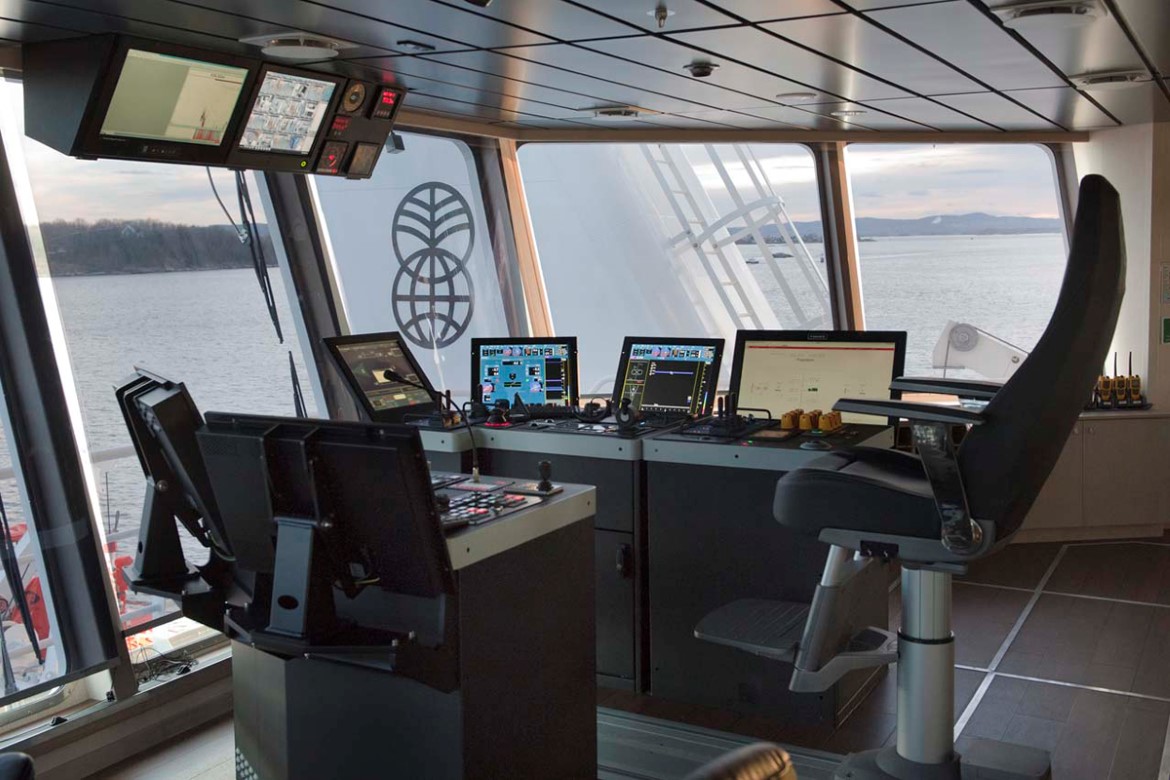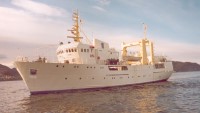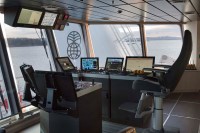Development aid at sea with cutting-edge technology
The first research vessel called Dr. Fridtjof Nansen set sail on its first mission in 1975. Since then, the Dr. Fridtjof Nansen has covered a distance equivalent to 60 journeys around the equator. Over the years, three vessels have borne this name, in honour of the Arctic explorer Fridtjof Nansen.
Today, the third and most recent heir of the name Dr. Fridtjof Nansen was launched. A 74-metre, state-of-the-art research vessel with capacity for 30 researchers to work on board.
The vessel is equipped with cutting-edge Norwegian scientific technology, such as echo sounders and sonar from Simrad, owned by the Kongsberg Group.
A new agreement has now extended the Nansen Programme, a Norwegian aid programme that promotes responsible fisheries management. The programme was launched in 1975 in parallel with the very first Nansen vessel.
Marine ecosystems under threat
On its many cruises off the coastlines of Africa and Asia, the Nansen vessel has gathered large amounts of data on marine ecosystems.
- Unfortunately, the marine ecosystems are threatened. The main threats are unsustainable fishing methods, pollution, climate change and a limited capacity to handle the consequences, says Jon Lomøy, director of Norad.
Knowledge provides the basis for sustainable management of fisheries.
Over the years, the vessels and their crews have trained oceanographers from a number of developing countries. They have also reported some disturbing findings, such as disquieting amounts of plastic in the Indian Ocean.
New agreement
The objective of the Nansen Programme is to help developing countries generate state revenues through adequate fisheries management. Fishing must be undertaken in a responsible manner that preserves marine ecosystems.
The programme is a collaboration between Norad, the Institute of Marine Research and the UN Food and Agriculture Organization (FAO).
The Nansen Programme has helped establish cooperation on shared management of fisheries in a number of developing countries. The Institute of Marine Research has its own experience of the benefits of such cooperation with the Soviet Union/Russia in the Barents Sea.
With the aid of the Dr. Fridtjof Nansen, the Nansen Programme has also helped establish environmental status reports for oil activities in Ghana and Angola.
- Read more about the organization of the Nansen Programme
Industry and food on the table
Oceans and coastal areas represent an important source of food, work, recreation, trade and economic prosperity for millions of people.
The main objective of the new Nansen Programme is for sustainable fisheries to improve access to food and nourishment in developing countries.
- Fisheries and related activities provide a livelihood for 60 million people. 95 per cent of these people live in developing countries, Lomøy explains.
The agreement is valid for the period 2017–2021 and has a budget of NOK 605 million.



